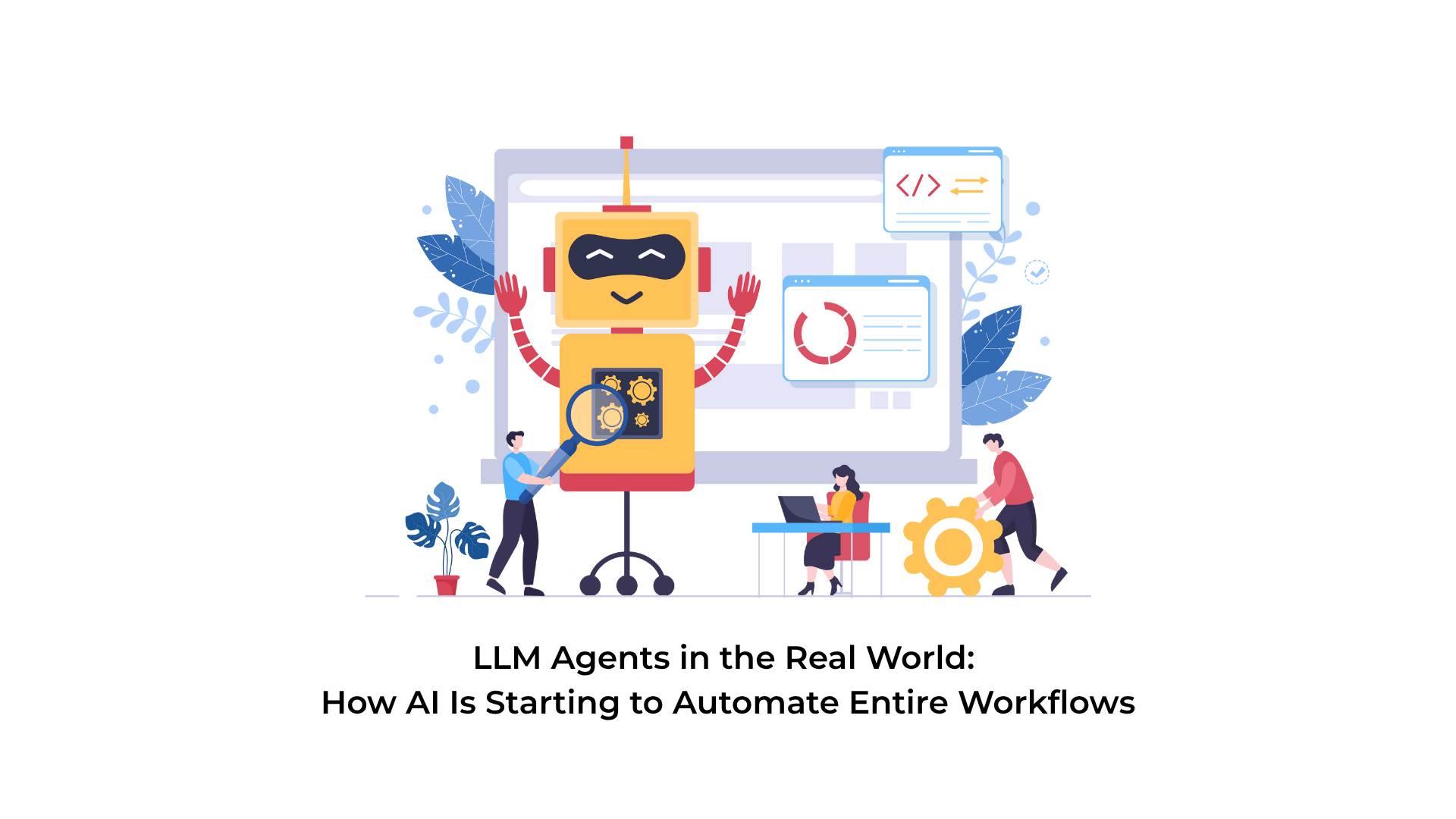In 2025, Large Language Models (LLMs) are no longer just tools for generating text—they’re becoming autonomous agents, capable of acting independently, making decisions, and completing complex tasks with minimal human input. Welcome to the next phase of AI evolution: LLM agents that automate entire workflows.
What Are LLM Agents?
An LLM agent is a system that combines a large language model (like GPT-4 or Claude) with tools for reasoning, memory, API integration, and decision-making. Unlike basic chatbots, these agents can:
- Plan multi-step tasks
- Use tools like browsers or APIs
- Write and execute code
- React and adapt to changing environments
- Interact with other systems or agents
This is a significant shift from “prompt-and-response” AI to autonomous problem-solving AI.
Real-World Examples of LLM Agents in Action
1. Auto-GPT
One of the first major autonomous agents, Auto-GPT, creates its task list, executes Python code, performs web searches, and manages files to reach user-defined goals. Businesses have used it to:
- Conduct market research
- Draft content strategies
- Build product reports
- Automate customer outreach
2. OpenDevin
A developer-focused agent, OpenDevin takes natural language requests like “Set up a Next.js project and connect it to Supabase” and executes the necessary steps in real-time. It acts as an AI developer assistant capable of reading documentation, writing code, and debugging.
3. SuperAgent
SuperAgent is designed for production use. It’s highly modular and ideal for workflow automation in enterprise settings. For instance, it can:
- Automate job candidate screening
- Handle customer queries across platforms
- Integrate with Slack, Notion, CRMs, and more
Key Use Cases in 2025
Industry Use Case Example
Marketing: Create full campaigns, from audience research to ad copywriting
HR Screen resumes, schedule interviews, draft onboarding docs
Software Dev Scaffold apps, write documentation, test, and deploy code
eCommerce Auto-manage listings, respond to customers, optimize pricing
Finance: Generate financial models, automate compliance workflows
What Makes LLM Agents So Powerful?
- Memory: Persistent memory lets agents remember context across sessions.
- Tool Use: Agents can use APIs, web searches, calculators, file systems, and databases.
- Reasoning Loops: They break tasks into steps and evaluate results.
- Autonomy: With minimal supervision, they can operate over long timeframes.
Challenges & Risks
Despite the promise, there are significant limitations:
- Hallucinations: Agents can still fabricate facts or take incorrect actions.
- Security: Autonomy opens the door to misuse or unintentional damage.
- Efficiency: Not all agents are optimized for speed or cost.
- Trust: Businesses are cautious about letting AI act without oversight.
The Future of Workflows
In 2025, companies will increasingly use hybrid models—pairing agents with human supervision. Think of them as junior employees who never sleep:
- They handle the boring stuff
- Humans handle the judgment calls
As the tech matures, expect to see AI orchestration platforms that manage multiple agents like departments in an organization.
Final Thoughts
LLM agents are rapidly shifting from experiment to infrastructure. While the field is still young, it’s already clear: automation is moving beyond macros and scripts into cognitive territory. By the end of the decade, many digital workflows—from marketing to development to operations may begin with a simple command:
“Agent, take care of it.”

